Mastering Open House Staging: Your Essential Guide
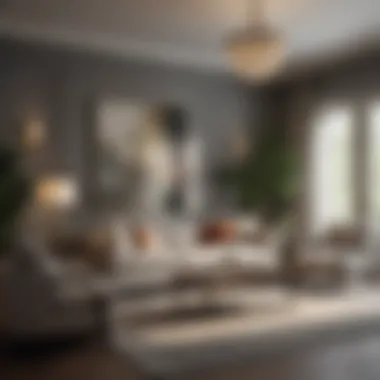
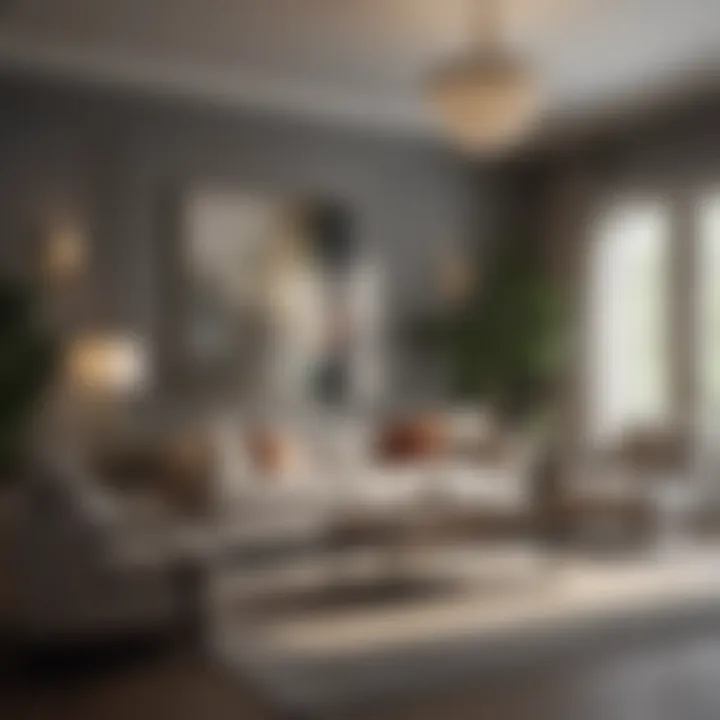
Intro
Staging an open house is a significant aspect of the real estate process. It involves careful consideration of how a property is presented to maximize its appeal to potential buyers. Understanding current trends and practicalities is vital for homeowners and real estate professionals alike. This guide aims to provide comprehensive insights that explore crucial strategies to enhance property presentation and visitor experience, ultimately attracting buyers.
Design Inspiration
Creating the right atmosphere is essential when staging an open house. Various design elements and trends can play a pivotal role in achieving a welcoming and impressive environment.
Current Interior Design Trends
Staying informed about current interior design trends can help you make informed decisions about staging. Popular trends include:
- Minimalism: Emphasizing simplicity and functionality. The use of neutral colors and uncluttered spaces can create an inviting atmosphere.
- Sustainable materials: Eco-friendly design choices are gaining traction. Consider using reclaimed wood or energy-efficient appliances to appeal to environmentally conscious buyers.
- Smart home features: Integrating technology can enhance convenience. Features like smart thermostats and lighting systems may draw attention and interest.
These trends not only improve aesthetics but also resonate with modern buyers.
Color Palettes and Their Effects
The selection of colors can dramatically influence a room's feel and the viewer's perception. Here are some effective color palettes:
- Earth tones: Colors like green, brown, and beige can evoke a sense of calm and connection to nature. They tend to make spaces feel warm and welcoming.
- Bold colors: A strategic splash of bold colors can create focal points and energize the space. Use them sparingly for accents in décor items or art pieces.
- Monochrome schemes: Using shades of a single color can provide sophistication and cohesiveness, particularly in smaller spaces.
"Choosing the right colors is not just an aesthetic choice; it can affect mood, behavior, and perception of a space."
Entertaining Ideas
Organizing an open house goes beyond just showing a property. Infusing entertaining ideas helps create memorable experiences for visitors, encouraging engagement and feedback.
Themed Party Concepts
Harnessing specific themes can make your open house more interesting. Here are some concepts:
- Seasonal themes: Reflect the current season through decorations and refreshments. For example, autumn-themed decor can create a cozy feel.
- Cultural themes: Incorporating elements from different cultures can make the event unique. Offering food and decorations representative of that culture can leave a lasting impression.
Menu Planning and Recipes
Offering food can be an excellent way to enhance the visitor experience. Consider light bites that are easy to manage, such as:
- Mini sandwiches: Always a crowd-pleaser. Use diverse fillings to cater to different tastes.
- Fruit skewers: These can be visually appealing and refreshing. They do not require utensils for enjoying.
- Beverage station: Provide a variety of drinks. Include options for both casual and sophisticated palettes, such as sparkling water and simple wine selections.
Staging an open house is intricate and requires thoughtful planning. By focusing on design inspiration and innovative entertaining ideas, you can create an inviting atmosphere that resonates with potential buyers.
Understanding the Importance of Staging
Staging is not just about making a house look visually appealing; it goes deeper than that. This process plays a crucial role in how potential buyers perceive a property. A well-staged home can create a significant impact during an open house, setting the stage for first impressions that can lead to offers.
Benefits of Staging
When a property is staged effectively, it showcases its potential. It allows buyers to visualize themselves in the space. Rather than focusing on the seller's personal belongings, staging emphasizes the home’s features. This creates a more inviting atmosphere that attracts a broader range of buyers.
Moreover, staging can increase the property's value. Homes that are staged often sell faster and at a higher price than those that are not. According to various real estate studies, the return on investment for staging can be quite significant.
Considerations for Staging
Staging should not be an afterthought. It requires a strategic plan that considers the target audience and current market trends. Homeowners need to select design styles that appeal to potential buyers, balancing personal taste with universal appeal.
In addition, staging necessitates thoughtful preparation. This includes decluttering, optimizing lighting, and ensuring that each room has a clear purpose. Overall, effective staging transforms a house into a market-ready product.
The Role of First Impressions
The adage "you never get a second chance to make a first impression" holds true in real estate. When buyers walk into a staged home, their initial reaction can determine their willingness to continue exploring the property. An attractive entryway, organized spaces, and strategic decor choices all contribute to an environment that feels welcoming.
Buyers often form their opinions within the first few seconds. Therefore, homeowners should invest time and resources into creating an inviting ambiance. This attention to detail can lead to stronger emotional connections, making it more likely that a buyer will envision their life in that home.
Psychological Impact on Buyers
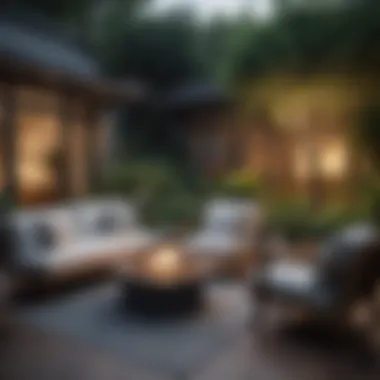

Staging taps into the emotional and psychological aspects of home buying. When a space is staged well, it can evoke feelings of comfort and warmth. Potential buyers might feel more at ease, enabling them to picture themselves and their families in those specific rooms.
Furthermore, staging can manipulate the perception of space. For instance, using appropriate furniture scale can make rooms appear larger or more functional. This psychological approach helps buyers understand how they could utilize the home in a practical and personal way.
To summarize, understanding the importance of staging revolves around grasping its multifaceted benefits. Homeowners and real estate professionals alike should recognize it as an essential tool for achieving a competitive edge in the market.
Planning Your Open House Staging
Planning your open house staging is crucial for a successful property showing. Proper planning helps in creating an appealing atmosphere that resonates with potential buyers. This stage involves thoughtful decision-making, considering various elements that contribute to an engaging experience. By strategically organizing the presentation of a home, you enhance its selling potential and ensure that it stands out in a competitive real estate market.
Setting Clear Objectives
Before you begin staging, it is essential to set clear objectives that define what you aim to achieve. These objectives should align with the overall goals for selling the home. Are you trying to attract first-time homebuyers, or targeting families looking for more space? Setting a clear purpose can guide every decision you make in the staging process.
- Target Market Identification: Determine who your ideal buyer is. Understanding the demographics and preferences of this group will influence your staging choices.
- Enhancing Key Features: Identify the unique selling points of the property. Focus your staging efforts on these aspects to maximize visibility and interest during the open house.
- Time Frame Considerations: Establish a timeline for staging activities leading up to the open house. Timely execution ensures that all elements are in place for a successful showing.
Choosing the Right Date and Time
The timing of your open house can significantly affect attendance and interest. Selecting the right date and time requires careful consideration of several factors.
Considering Local Events
Local events can greatly impact open house attendance. When choosing a date, it's important to check the calendar for community activities or major events that might distract potential visitors. If there is a popular event happening nearby, it can either be advantageous or detrimental.
- Advantage of Coordination: Aligning your open house with local events can create more foot traffic if the events are complementary. For example, if there is a neighborhood festival, people may be open to dropping by an open house after enjoying the festivities.
- Disadvantages of Conflicts: On the other hand, scheduling an open house on the same day as a major sporting event could deter attendance. Understanding the local culture allows you to avoid conflicts and maximize exposure.
Analyzing Market Trends
Market trends provide insight into the best times to hold an open house. They can inform your choice of date and time based on current behaviors and preferences of buyers.
- Understanding Buyer Habits: By analyzing when potential buyers are most active—on weekends, for example—you can significantly boost the number of visitors.
- Seasonal Considerations: Different times of year can influence property sales. For instance, the spring and summer months tend to attract more buyers, while the winter can see a decrease. Analyzing these trends can help in determining the optimal window for your open house.
In essence, planning your open house staging effectively means combining clear objectives with strategic timing. This careful preparation enhances the overall marketing strategy and can markedly increase interest in the property.
Creating an Inviting Atmosphere
An inviting atmosphere is crucial when staging an open house. It helps potential buyers to envision themselves living in the space. Each element contributes to this goal. From the arrangement of furniture to the atmosphere created by the lighting, every detail matters. A well-staged open house can significantly enhance the likelihood of a quick sale at a desirable price. This section will delve into decluttering, optimizing lighting, and enhancing curb appeal, all pivotal components in crafting that sought-after inviting environment.
Decluttering Spaces
Decluttering is the first step to creating an inviting atmosphere. A clean, organized space allows potential buyers to focus on the property rather than the owner’s personal belongings. It is essential to remove excess furniture, decor, and other personal items.
- Benefits of Decluttering:
- Increases space perception: Rooms appear larger without clutter.
- Enhances cleanliness: A tidy space feels more appealing.
- Shows potential: Buyers can visualize their own belongings in an empty space.
Consider packing away non-essential items and personal photographs. Keeping surfaces clear and organized helps to maintain a minimalistic style. Even small changes such as removing bulky furniture can have a substantial impact on the overall feel of a room.
Optimizing Lighting
Lighting plays a fundamental role in setting the mood for an open house. When done correctly, it highlights the property’s best features, making spaces feel warm and welcoming. A well-lit home appears more inviting and spacious.
- Tips for Optimizing Lighting:
- Maximize natural light: Open curtains and blinds during the open house to let sunlight in.
- Use varied light sources: Combine ambient, task, and accent lighting for a layered effect.
- Consider the color of light bulbs: Soft white bulbs create a cozier atmosphere compared to harsh fluorescent lights.
You can also employ strategic lighting to draw attention to key areas like a fireplace or architectural detail. This not only enhances the visual appeal but also helps create a memorable experience for visitors.
Enhancing Curb Appeal
The first impression is often formed before entering the property. Curb appeal impacts the overall atmosphere. Enhancing the exterior of the home can significantly affect buyer interest. It conveys a sense of care and attention to detail.
- Methods to Enhance Curb Appeal:
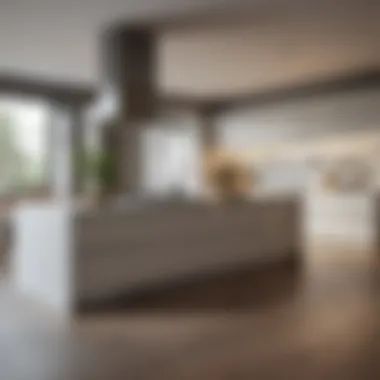
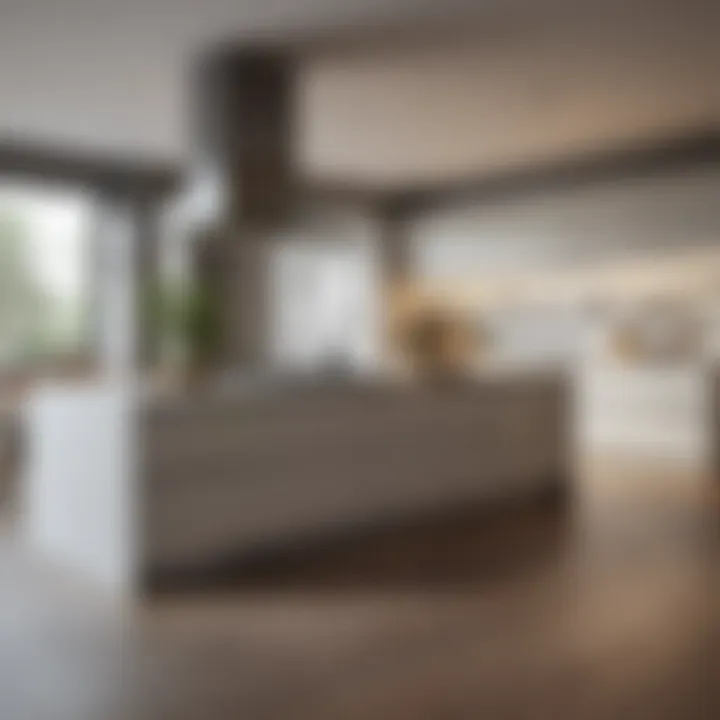
- Maintain landscaping: Trim shrubs, mow the lawn, and plant seasonal flowers to give a fresh look.
- Refresh the exterior: A new coat of paint on the front door or new house numbers can add charm.
- Showcase outdoor spaces: Set up outdoor seating areas to suggest functionality and comfort.
Remember, a polished exterior invites visitors to step inside. Take time to inspect and address any flaws or repairs needed before the staging process begins.
An inviting atmosphere can make the difference between a passerby and a buyer.
Interior Design Essentials for Staging
The concept of interior design is crucial in the realm of open house staging. A well-thought-out design does not merely enhance aesthetic appeal; it cultivates an environment that resonates with potential buyers. Through strategic interior design, homeowners can establish a connection with visitors, rendering the space unforgettable. The aim is not just to display what is available but to create an immersive experience that allows prospective buyers to envision themselves living within those walls. Each element must serve a purpose that aligns with the overall goal of making the property more appealing.
Color Schemes and Textures
Choosing the right color schemes and textures is essential for creating a welcoming atmosphere during an open house. Neutral tones often serve well as a backdrop because they promote calmness and make spaces appear larger. Shades like beige, soft grays, or off-whites can facilitate buyers' ability to imagine their personal touch on the space. Additionally, integrating textures through fabric choices or surface finishes can add depth and dimension—think textured cushions, soft throws, or woven materials. This interplay between color and texture creates a balanced visual experience, enhancing the overall ambiance.
Furniture Placement and Flow
Effective furniture placement is another core aspect of staging an open house. The arrangement of furniture should promote easy movement while highlighting the room's best features. Consider traffic flow when positioning sofas, chairs, and tables. Open spaces can seem more inviting if furniture is arranged in conversational clusters rather than lining walls. Prioritize key pieces that define the purpose of each room without overcrowding it. For instance, a well-placed coffee table can draw attention to a living area while providing a functional space for guests.
Accessorizing with Purpose
Accessorizing a staged home involves more than simply adding decor—it's about making deliberate choices that reinforce the home’s style. Each accessory should add value, either visually or contextually. Art that resonates with the home's theme, fresh flowers to inject life, or carefully chosen books on a shelf can enhance the aesthetic without overwhelming it. In staging, less is often more. Avoid clutter by selecting a few impactful pieces that highlight the spatial qualities of each room. Such an approach effectively creates an inviting and polished environment that aligns with potential buyers' expectations.
"The right design elements can transform a mere space into a prospective buyer's dream home."
In summary, interior design essentials for staging are integral to the open house experience. The careful selection of color schemes, thoughtful furniture placement, and purposeful accessorizing collaborate to create an inviting atmosphere. Together, they work not just to beautify but to inspire, leaving a lasting impression on potential buyers that goes beyond the visuals.
Utilizing Technology in Staging
In the current digital landscape, technology plays a pivotal role in how properties are presented to potential buyers. Staging an open house through the lens of technology can significantly enhance the overall experience for visitors. It not only creates a lasting impression but also broadens reach, provides convenience, and allows for a more engaging interaction with the property.
Benefits of Utilizing Technology in Staging:
- Wider Audience Reach: Technology allows for showcasing properties beyond physical boundaries. Virtual tours can display homes to potential buyers unable to attend in person.
- Increased Engagement: Interactive elements such as videos and 3D tours can captivate interest and hold attention more effectively than traditional methods.
- Enhanced Real Estate Listings: Integrating high-quality photos and videos into listings can highlight the key features and appeal of a home.
Virtual Tours and Presentations
Virtual tours have transformed how open houses are conducted. They provide an immersive experience that can simulate a real walk-through of the property.
- Convenience for Buyers: This technology allows potential buyers to view the home at their convenience, removing the constraints of time and travel.
- Detailed Exploration: Virtual tours often include hotspots with information about features, materials, and layouts. This gives buyers comprehensive details without the limitations of a physical visit.
- Cost-Effective: While the initial investment in technology may seem high, it can save money in the long run. It reduces the need for multiple in-person showings and extends viewing capacity to interested buyers outside the local area.
Social Media Marketing Strategies
Social media platforms have become an essential tool for promoting staged open houses. Utilizing them effectively can amplify reach and optimize engagement.
- Targeted Advertising: Platforms like Facebook and Instagram allow for targeted ads, reaching specific demographics likely interested in purchasing a property.
- Live Streaming: Hosting live events on social media can create excitement. Buyers can ask questions in real time, making the experience interactive and personal.
- Engaging Content: Posting visually appealing images and videos of the staged home can generate interest. Use stories, polls, and other interactive content to keep potential buyers engaged.
"Incorporating technology in staging elevates the open house experience, creating a modern platform for buyers and sellers to connect."
Logistical Considerations for Open Houses
Logistical considerations play a crucial role in ensuring that an open house is not only well-received but also maximizes its potential to convert visitors into buyers. These elements help streamline the event, making it memorable for the right reasons. To create a successful open house, one needs to pay close attention to details.
Managing Visitor Flow
Efficient visitor flow management is fundamental during an open house. It refers to the strategies employed to guide potential buyers through the property in a structured manner. Consider these tactics:
- Designate Entry and Exit Points: Clearly mark where visitors should enter and exit. This reduces congestion and maintains a clean path through the house.
- Guided Tours vs. Freestyle Exploration: Decide if visitors will be given a guided tour or if they will explore on their own. Guided tours can provide valuable insights about the property, while spontaneous exploration allows buyers to imagine themselves in the space.
- Track Visitor Numbers: Use sign-in sheets to monitor how many individuals attend. This information is valuable afterward to assess interest levels and plan future events accordingly.
Proper management not only makes for a pleasant experience but also assures potential buyers of the home's openness and accessibility.
Signage and Directions
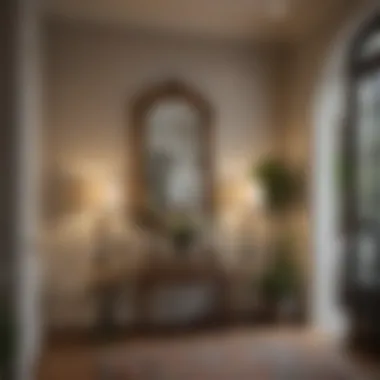

The effectiveness of signage during an open house cannot be overstated. Properly placed and clear signage directs visitors to the property and enhances their experience. Here are some important aspects:
- Directional Signs: For homes located in more secluded areas, directional signs can guide visitors from main roads. Use bold lettering and arrows to direct the flow toward your open house.
- Signage at the Property: Once visitors arrive at the site, clear signage provides important information. Signs directing them to parking, entry points, and even reminders about protocol (e.g., removing shoes) are helpful.
- Visible and Simple Wording: Ensure that the signage is easy to read from a distance. Avoid clutter and keep wording straight to the point. This facilitates an unobstructed view and provides immediate comprehension.
- Branding Elements: Incorporate personal branding or agency logos on signs. This fosters recognition and trust, making visitors more comfortable entering the property.
By implementing these logistical strategies, you set the stage for a smooth open house experience. Attention to these facets can significantly influence visitors' perceptions and lead to productive interactions.
Post-Open House Follow-Up
After the open house event, it is crucial to engage in diligent follow-up practices. This stage presents a valuable opportunity to analyze the open house's effectiveness and make informed decisions that can impact future showings. Assessing feedback and adapting strategies are fundamental to refining your approach in the competitive real estate market.
Assessing Visitor Feedback
The process of collecting visitor feedback is essential for understanding how the staging was perceived. This feedback can be gathered through various means, including surveys, direct conversations, or even informal chats during the open house. It is beneficial to ask targeted questions regarding:
- Overall impressions of the property and staging.
- Specific features that stood out positively or negatively.
- Suggestions for improvement from a potential buyer's perspective.
Utilizing platforms like Google Forms or WhatsApp can facilitate easier response collection. Analyzing this feedback provides insights into the effectiveness of your staging decisions. It may reveal preferences regarding layout, decor, and overall atmosphere. Listening to what potential buyers appreciate or dislike helps align your strategy with market expectations, enhancing the overall appeal of your property.
Adjusting Strategy Based on Insights
Once visitor feedback has been assessed, it is vital to adjust your staging strategy accordingly. Each open house is an opportunity to improve, whether through minor tweaks or more significant changes. Here are some strategies:
- Implement Immediate Changes: If common concerns arise, such as poor lighting in specific areas, address them promptly before the next showing.
- Refine Marketing Materials: Use any valuable feedback to enhance property descriptions, highlighting aspects that buyers found appealing.
- Experiment with Staging Variations: Different arrangements or decor styles may resonate better with different target demographics. Testing these variations can lead to better outcomes in future showings.
"Success is not just about what you accomplish in life; it is about what you inspire others to do."
By taking these actions, agents and homeowners can create a more personalized and attractive presentation of their properties for potential buyers. Adapting based on real feedback not only enhances overall visitor experience but also demonstrates a commitment to meeting buyer needs. The follow-up process, therefore, is not merely a formality but a strategic endeavor that can significantly influence sales outcomes.
Common Mistakes to Avoid in Staging
Staging an open house requires careful planning and execution. However, some common pitfalls can diminish the impact of your efforts. Understanding these mistakes not only helps avoid them but can also enhance the overall effectiveness of your staging approach. Effectively navigating these missteps can increase the likelihood of attracting serious buyers and securing a sale.
Over-Personalizing the Space
One of the frequent errors in staging is over-personalization of the property. Homeowners often want to show their unique personality and style, believing that personal touches will resonate with potential buyers. However, this can backfire. The key to effective staging is to create a neutral environment that allows potential buyers to envision themselves in the space.
Overly personal art, family photos, or distinctive décor may distract visitors. Buyers need to imagine their lives in the home, making it essential to remove personal items. Instead, aim for a clean and organized space accentuated with neutral and appealing decor. Take time to depersonalize rooms and consider adding generic artwork or neutral-colored furniture that invites interest without imposing a specific style.
Neglecting Safety and Comfort
Another significant mistake involves neglecting safety and comfort during the staging process. A well-staged home should not only look good but also feel welcoming and secure. This aspect is often overlooked by sellers eager to showcase their homes. Failing to address safety concerns can deter visitors and leave a negative impression.
Ensure all areas of the home are safe and accessible. Clean up potential hazards, like cluttered pathways or loose rugs. Additionally, temperature control plays a vital role in visitor comfort. If the weather is cooler or warmer than usual, adjust the thermostat accordingly.
Remember: A comfortable atmosphere encourages visitors to linger, increasing the chance they will appreciate your home.
"Safety and comfort in a staged home are as essential as aesthetics. Buyers should feel at ease to envision their future in the space."
By avoiding the mistakes of over-personalizing and neglecting safety and comfort, you can create a staging environment that resonates positively with potential buyers. These considerations not only reflect well on the property but can also streamline the selling process.
Ending: The Lasting Impact of Professional Staging
Staging a home for an open house is not just about enhancing its visual appeal. It plays a significant role in how potential buyers perceive a property. A well-staged home can create an emotional connection and influence buying decisions. It is essential to understand that professional staging has a lasting impact that goes beyond the open house itself.
Staging sets the tone for the entire selling process. It helps in showcasing the best features of a home. Potential buyers can envision themselves living there when they see it at its best. Moreover, buyers are often looking for key aspects such as space, light, and functionality. When these elements are highlighted effectively, it increases their interest.
Investing in professional staging can lead to quicker sales and potentially higher offers. Homes that are staged usually sell for more than those that are not. According to the National Association of Realtors, homes that are staged can sell 73% faster than unstaged homes. This statistic underscores the tangible benefits of staging. Not only does it reduce the time a property sits on the market, but it can also lead to a better overall selling experience for both buyers and sellers.
The checklist for notable advantages of staging includes:
- Enhanced visual aesthetics that attract interest
- Improved buyer perception through a well-thought-out layout
- Increased property value due to better presentation
- A faster sale cycle that is beneficial for sellers
- An opportunity to highlight the unique features of the property
"Staging not only transforms spaces; it transforms potential."
Long-term, the impact of professional staging extends beyond the sales transaction. Sellers often find that the positive experiences and impressions created during showings can foster goodwill. This can lead to referrals or subsequent business, positively impacting a real estate agent's reputation.
As we discussed, the selection of decor, furniture arrangement, and color choices all have implications on how a space is perceived. By investing time and resources into staging, agents and homeowners inevitably contribute to a more appealing and successful selling journey.
In summary, the long-lasting benefits of professional staging reinforce its importance throughout the selling process. With clear thought into the strategic presentation of a property, both the seller and the buyers can gain significantly from the art of staging.















